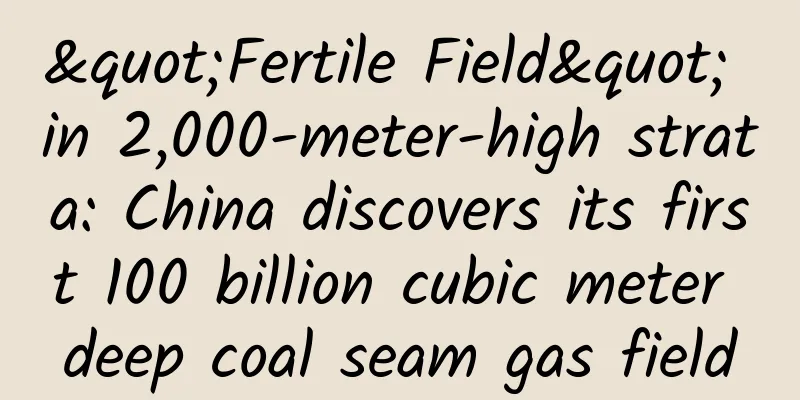La Nina: Winter is coming, I'll be back

|
Produced by: Popular Science Expo Author: Half Lazy (Institute of Atmospheric Physics, Chinese Academy of Sciences) Producer: China Science Expo In June 2024, El Niño (which means "little boy" in Spanish) had just left the stage, and in September, the World Meteorological Organization (WMO) said that La Niña (which means "little girl" in Spanish) was ready to "return" in the fall. Currently, the warning issued by the US Climate Center believes that the probability of La Niña occurring between September and November 2024 is 71%, which may be a weak event. ENSO Occurrence Probability Prediction (Image source: NOAA) Many people mistakenly believe that the emergence of La Nina means that my country's winter will become colder, or even bring more severe cold waves. However, La Nina is not the same as a cold winter, and its impact is even a bit "complex". Next, let's unravel the "mystery" of La Nina together! La Niña: Yes, I am a cold girl. For many people, the names of El Niño and La Niña are already "well-known" - especially in recent years, the two can be said to be the seed players in the headlines of the weather news list. Observed and predicted temperatures in the main monitoring areas of tropical Pacific ENSO from early 2024 to spring 2025 (Image source: NOAA) La Nina and El Nino share the same home, the tropical Pacific Ocean, but they have completely different characteristics. A La Nina event refers to a phenomenon in which the sea surface temperature in the central and eastern equatorial Pacific Ocean is abnormally cold over a large area, and the intensity and duration meet certain conditions. In meteorology, it is generally called a "cold phase" . El Nino is the opposite, corresponding to a large-scale warming of the sea surface temperature in the central and eastern equatorial Pacific, which is generally called the "warm phase" in meteorology. It should be noted that when La Nina occurs, it is not only the sea surface that is colder, but the deep water in the tropical Pacific is also colder than normal. A pool of cooler-than-average (blue) water forms beneath the surface of the tropical Pacific Ocean at the equator between July 12 and September 9, 2024. (Image source: NOAA) The movement of the ocean surface is mainly controlled by the surface wind. When the easterly trade winds strengthen, the warm water on the eastern Pacific Ocean is blown more westward, causing the sea level in the eastern Pacific Ocean to drop compared to the western Pacific Ocean. The deep cold water along the west coast of South America and the equatorial coast carries deep-sea fish schools upward, causing the sea surface temperature in the eastern Pacific Ocean to drop below normal levels. Fishermen along the northern coast of Ecuador and Peru also have a "big harvest" of deep-sea fish. At the same time, the sea water temperature in the western Pacific Ocean is high, the air pressure drops, and the humid and hot air provides energy for the development of convection here, which also contributes to the occurrence and development of typhoons and tropical storms. The ocean-atmosphere circulation situation corresponding to El Nino and La Nina (Image source: NOAA) **El Nino and La Nina love to sing a "two-person show" - after a strong El Nino, La Nina is likely to appear. **For example, La Nina arrived after 1997-1998, 1972-1973 and 2009-2010; but it is not absolute - for example, 1991-1992 and 2002-2003 . After the El Nino event ends, the ocean will be accompanied by a period of "neutral" state (neither El Nino nor La Nina), and then slowly transition to the next stage . To determine whether La Nina will come quietly after El Nino occurs, we have to look back to the ocean. Currently, the Niño 3.4 index is mainly used for judgment, which refers to the abnormal sea temperature in the range of 170°W-120°W and 5°S-5°N. For my country, a La Nina event is defined as a 3-month sliding average of the Niño 3.4 zone sea temperature index ≤-0.5℃ for 5 consecutive months. 2-year sea surface temperature history for all strong El Niño events since 1950 (grey line) and the most recent (2023-24) event (purple line) in the tropical Pacific Niño 3.4 region (Image source: NOAA) El Niño usually occurs irregularly, about every two to seven years, and usually matures and decays quickly within a year. La Niña is usually weaker than El Niño, but lasts longer, usually about 9-12 months, and some even last more than two years (the so-called multi-year period). The first "triple" La Niña event of this century occurred in 2020-2023, and the last one occurred in the late 1990s. How powerful is the “little girl”? With so many competitors, why do these two need "special" attention? **This is because El Niño and La Niña (collectively known as the El Niño -Southern Oscillation, or ENSO)** are the strongest interannual variability signals in the Earth's climate system, and their impact should not be underestimated . Globally, extreme disasters associated with La Niña over the years have taken a huge human and economic toll, including severe drought, heat waves and wildfires in the southwestern United States, devastating floods in Australia, Bangladesh, China and Venezuela, and deadly hurricanes. Multi-year La Niña events have caused persistent flooding in Australia, Indonesia, tropical South America, and southern Africa, and extreme drought in the southern United States, equatorial Africa, India, and southeastern China. The impact of La Nina on global climate (Image source: NOAA) For my country, in the autumn when La Niña occurs, there is likely to be more precipitation in the north and a high possibility of autumn floods. For example, the La Niña events in 1974, 1984 and 2000 all caused more precipitation in the Yellow River and Huaihe River basins in those autumns. In the winter when it occurs, the temperature is likely to be low and a cold winter is likely. During the La Niña event of 2007-2008, a large-scale low-temperature rain, snow and freezing disaster occurred in southern my country in early 2008. During the "triple" La Niña of 2021-2023, the lowest temperatures at more than 60 meteorological observation stations in North China exceeded or reached the historical extreme since the establishment of the stations in the winter of 2021. Many places in Inner Mongolia encountered the strongest snowstorm since historical meteorological records were kept. More than 1.18 billion people and 90% of the area (including Hainan) were affected. The maximum drop in the lowest temperature in my country from January 5 to 8, 2021 (Photo source: China National Meteorological Administration) More directly related to our "rice bowl" is that by affecting weather and climate, El Niño and La Niña can have a significant impact on global food production, with regional differences. El Nino events affect at least a quarter of the world's crop production, including wheat, corn, rice, soybeans and sorghum. Since soybean production is concentrated along the coast of America, the timing of El Nino's attack often corresponds to the stage when soybeans need the most water for growth, so the emergence of El Nino often leads to a rapid increase in global soybean production. Projected impacts of El Niño on major commodity crops, based on analysis of historical crop yield and climate data from 1961 to 2020 (Image source: NOAA) Under the influence of La Niña, the growing cycle of crops in areas with lower temperatures will be extended, which may lead to a decrease in yields; while in areas with higher temperatures, the growing cycle of crops will be shortened, but it may also lead to the breeding and spread of pests and diseases. For China, some studies have shown that in the long run, compared with El Niño events, the net impact of La Niña on food productivity may be generally positive. Precisely because both are closely related to economic production, predictions about their changes are also a hot topic in the investment community. Impact of La Nina on the yields of four crops (Image source: Reference 1) La Nina = cold winter ? Of course, what we are most concerned about is whether the upcoming La Niña will bring a colder winter? As summarized at the beginning, La Niña and cold winter cannot be directly equated; the two are in a sufficient but not necessary relationship . Whether my country's winter is colder or warmer is closely related to the intensity of the East Asian winter monsoon. In addition to La Niña, Arctic sea ice, Eurasian snow cover and natural variability within the atmospheric circulation system also play an important role. La Nina Synthesis since 1951 (Left: Percentage of temperature anomaly; Right: Probability of positive anomaly) Image source: National Climate Center Although from 1951 to the mid-1980s, winter temperatures in my country during La Niña events were significantly lower (temperatures were more than 1°C lower than the same period in previous years, and in the winter of 1954 they were even more than 3°C lower), against the backdrop of global warming, higher winter temperatures have occurred occasionally during La Niña events since 1986. However, according to statistics, the probability of a colder winter in my country is indeed higher after the La Nina event. Since this year's La Nina may be a weaker event, we will have to wait and see to what extent it will affect the temperature this winter. Winter temperature anomalies in my country during La Niña years (Image source: National Climate Center) How difficult is it to accurately predict ENSO? ENSO is part of the ocean-atmosphere system, and like all weather phenomena we are familiar with, it plays its role in global weather and climate change. So does this mean that we can also accurately predict changes in ENSO, so as to better predict the possibility of extreme climate events such as floods and droughts in advance, and reduce the cost of losses for us? Fundamentally, ENSO is an instability of the ocean, which means it is a fluctuation that gets its energy from the background state. Although we have a good idea of how weather systems will behave in the short term (a day or so), once we extend the prediction time, the results become less reliable. A simple example is that we can roughly predict the height of a child next year based on his height this year, but it is difficult to predict how tall he will be in 6 years. Because in the process of extrapolating year after year, each step will produce errors, and as the errors continue to accumulate, a butterfly effect will occur: a small difference in the first step may lead to a completely different result in the end. Of course, if all you want to know is the average height of 6th grade students, the difficulty is greatly reduced. This is why meteorologists always say that how accurate weather and climate models are depends on how far you want to predict the results and how much detail you want . Because ENSO prediction is so important, many institutions and teams at home and abroad have developed their own dynamic and statistical models (including AI models) to try to make real-time rolling predictions of ENSO. However, the expected skills of each model are different, and some are very different. Even the same model is not stable in its prediction accuracy for different ENSO events. In general, the ocean-atmosphere interaction is too complex, and ENSO still implies a strong degree of unpredictability. Current mainstream ENSO prediction models and comparison of their results (Image source: International Climate Research Institute (IRI), Columbia University, USA) Will La Niña become more frequent in the future? It is worth noting that La Niña is not a high-probability event . In the past 100 years, there have been a total of 20 La Niña events, 10 of which were one-year events and 10 were multi-year events, for a total of 33 La Niña years. But multi-year La Niña events are indeed occurring more and more frequently: since the beginning of the 21st century, there have been five multi-year La Niña events, including 1998-2000, 2007-2008, 2010-2011, 2016-2017 and 2020-2022. Multi-year La Niña events, which correspond to stronger sea temperature anomalies, often have persistent and cumulative destructive effects on the global climate, environment, economy and society, and significantly increase the risk of extreme weather disasters. Temporal evolution of Niño 3.4 SST anomalies. La Niña years are defined as below-normal (< - 0.5°C) Niño 3.4 index, with the SST anomalies in the index region (5°S-5°N, 120-170°W) averaged over the mature period of the ONDJF. Gray bars represent neutral years, and blue shading represents 1970–2022. b, c, Comparison of the composite cumulative climate anomaly means for 10 single-year La Niña events (b) and 10 multi-year La Niña events (c) from 1920 to 2022. The cumulative anomaly is the sum of the average ONDJF anomalies for each year of the entire event, including land precipitation (mm month−1), SST (°C), and 850 hPa wind (ms−1) anomalies. (Image source: Reference 2) Observational facts have revealed an accelerating trend in the current multi-year La Niña events. According to some studies, the frequency of La Niña events may increase in the future, and the number will increase with the increase of greenhouse gas emission intensity. The range is from 19±11% under low emission scenarios to 33±13% under high emission scenarios. This also means that the extreme weather and climate seen in the multi-year events that have occurred may occur more frequently in the future. The projected increase in the frequency of multi-year La Niña events. a, Comparison of the number of multi-year La Niña events (number of events in 100 years) for 1900–1999 (blue bars) and 2000–2099 (red bars) in the model selected under SSP585 (left side of the vertical line). b, Multiannual evolution of La Niña events (events occurring every 100 years) over the past 500 years for picontrol (black) and the 60-year shifts separated by 1850 (the beginning of the historical run) (blue) to the end of the 21st century for SSP585 (red). c, The proportion (percentage) of multi-year La Niña events occurring under different scenarios under SSP585 (see letters on the x-axis and corresponding descriptions at the bottom). (Image source: Reference 3) The road ahead is unknown and requires great efforts The latest report from the World Meteorological Organization (WMO) shows that there is an 80% chance that the global average annual temperature will temporarily exceed the pre-industrial level by 1.5°C in at least one year in the next five years. This means that we are getting closer to the goals set by the Paris Climate Change Agreement, but also further away from the global goal of responding to climate warming. Global temperature ensemble prediction results for 2024-2028 (Image source: NOAA) But El Nino and La Nina are not really responsible for the worse future we face - after all, they existed in the Earth's cycle long before pollution or global warming. Although global warming is an established fact, we still have great uncertainty about future climate change, especially regional changes. Just like the process of scientific exploration, we still have a long way to go. But what is certain is that the story of this winter is about to begin. References: 1. Iizumi, T., Luo, JJ., Challinor, A. et al. Impacts of El Niño Southern Oscillation on the global yields of major crops. Nat Commun 5, 3712 (2014). https://doi.org/10.1038/ncomms4712 2. Wang, B., Sun, W., Jin, C. et al. Understanding the recent increase in multiyear La Niñas. Nat. Clim. Chang. 13, 1075–1081 (2023). https://doi.org/10.1038/s41558-023-01801-6 3. Li, Y., Strapasson, A., & Rojas, O. (2020). Assessment of el nio and la nia impacts on china: enhancing the early warning system on food and agriculture. Weather and Climate Extremes, 27, 100208. 4. Geng, T., Jia, F., Cai, W. et al. Increased occurrences of consecutive La Niña events under global warming. Nature 619, 774–781 (2023). https://doi.org/10.1038/s41586-023-06236-9 5. https://www.climate.gov/news-features/blogs/enso/september-2024-enso-update-binge-watch 6.https://iri.columbia.edu/our-expertise/climate/forecasts/enso/current/?enso_tab=enso-sst_table 7.Capotondi, A. Extreme La Niña events to increase. Nature Clim Change 5, 100–101 (2015). https://doi.org/10.1038/nclimate2509 |
>>: Is it lack of ability or bad luck? In fact, your brain is quietly making excuses for you
Recommend
A brief discussion on APP operation and promotion: How to place advertisements accurately?
Preface: As of the end of March this year, accord...
Riding a bicycle doesn’t save energy, so why is it less labor-intensive than walking?
Is it more labor-saving to walk or ride a bicycle...
Specific virtual project disassembly, playing with short video materials, single store monthly income of tens of thousands + [Video Course]
Specific virtual project disassembly, playing wit...
Preliminary preparation for developing e-commerce WeChat applet
With the development of intelligence, mobile e-co...
The humble brown dwarf
Author: Du Lian Audit│Huang Jian Editor: Zhao Jin...
Cough and phlegm? 99% of people drink cough syrup incorrectly!
Recently, respiratory diseases have been prevalen...
Why have we been obsessed with solving pi from ancient times to the present?
When it comes to "π", Chinese people wi...
How much does it cost to develop a chemical industry mini program in Linxia?
How much does it cost to be an agent of Linxia Ch...
I'm tired of waiting and found out that iOS 9.2 beta4 is the official version
After 3 weeks of waiting, we finally welcomed the...
What should operators do before, during and after an online event?
Today, taking online activities as an example, le...
Electric Technology Car News: Highlander has long been unable to satisfy the thirsty car buyers. Who will be the next SUV overlord among Trumpchi, Changan and Haval?
With the rapid rise of domestic auto brands, more...
The fifth episode of the Aite tribe clinic: data collection and front-end application
【51CTO.com original article】 Activity description...
4 steps to quickly increase your conversion rate!
First of all, what is the growth we want to talk ...
It took only 6 years for mobile advertising to defeat PC and become the protagonist of digital advertising. What happened in the advertising market?
Seven years ago, Apple iPhone 4 was released and ...









